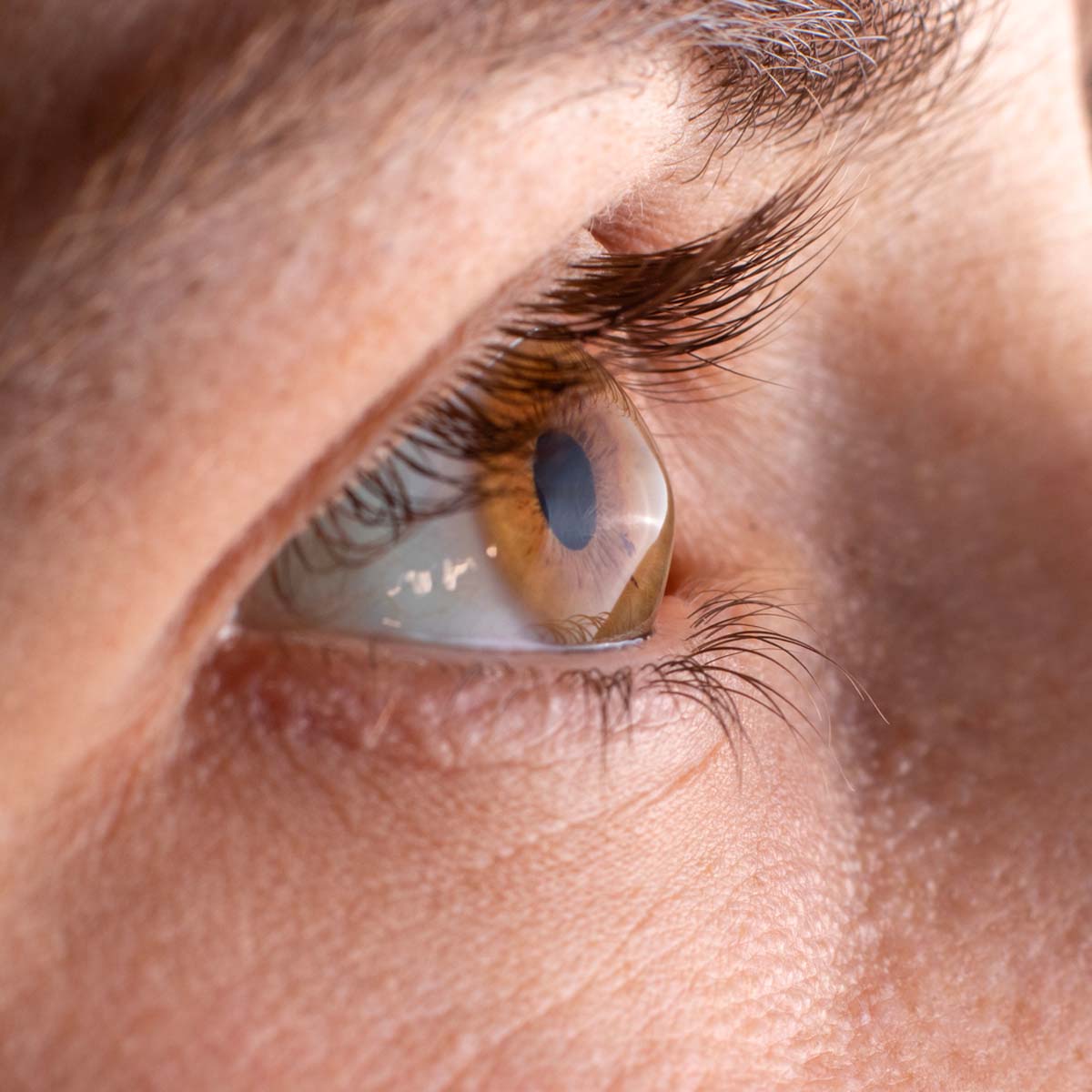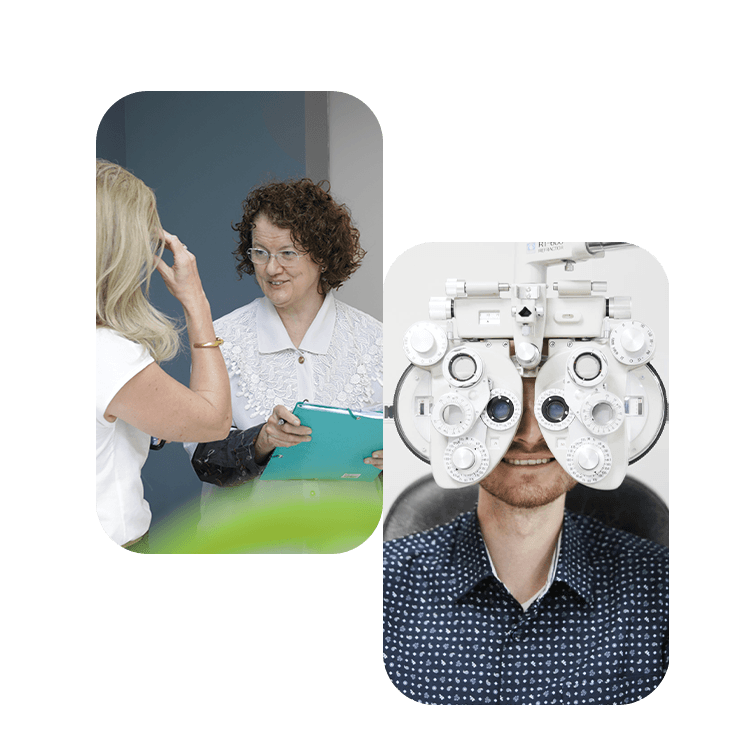Eye Care Designed for You
We provide the highest level of eye care in the safest possible environment for your family.
Make an Appointment
Online Schedule

Keratoconus Treatment in Dubai
Learn more about Keratoconus and the treatment options available.
Keratoconus is a non-inflammatory degenerative disorder of the eye in which structural changes within the cornea cause it to thin and change to a more conical shape than its normal gradual curve or dome shape.
Keratoconus can cause substantial distortion of vision, with multiple images, streaking lights, and sensitivity to brightness or photophobia. In most cases, getting corrective specialty contact lenses from your keratoconus specialist in Dubai is effective enough to allow the patient to continue to drive.
In case vision correction through lenses is no longer possible, keratoconus surgery in Dubai will be recommended to the patient.
In most cases, a keratoconus specialist in Dubai will prescribe corrective specialty contact lenses to correct the vision and increase the comfort of the patient.
This particular ectasia eye treatment is only offered by the top ophthalmologists and complete, modern eye centers in this city.





Keratoconus FAQ's
What is Corneal Collagen Cross-Linking as a Treatment for Keratoconus?
During corneal collagen crosslinking for treating keratoconus, custom-made riboflavin eye drops are applied to the cornea, which is then activated by ultraviolet light. This amazingly simple process has been shown in laboratory and clinical studies to increase the amount of collagen cross-linking in the corneal layers, and thus strengthen the cornea. In published European studies, such treatments were proven safe and effective in patients.
The theory behind CXL treatment is that the fibrils of the keratoconus cornea lose their ability to link to each other.
This treatment works by increasing collagen cross-linking, which form the natural “anchors” within the corneal layers. These anchors are responsible for preventing the cornea from bulging out and becoming steep and irregular, as found in more advanced keratoconus.
UVA light is applied in precise amounts using a specialized device with LED lights.
CXL treatment causes more cross-linking of the fibrils, making the cornea stronger. The abnormal curvature of the cornea due to keratoconus changes the cornea’s refractive error, producing moderate to severe blurriness of vision. As keratoconus advances, rigid gas-permeable (RGP) contact lenses may be the only non-surgical way to achieve clear vision. If keratoconus continues to advance, scarring of the central cornea can occur. This image shows a map of an eye with keratoconus. The asymmetrical off-center red and yellow area shows the forward bulging due to keratoconus.
What is Intacs© as a treatment for Keratoconus?
Another established treatment for keratoconus is Intacs©.
Intacs Inserts are a medical device approved by the FDA for the correction of 1.00 to 3.00 diopters of myopia (nearsighted, shortsighted) and virtually no astigmatism. Intacs inserts are the only refractive surgery procedure that adds structural rigidity/integrity to the cornea. This unique attribute made Intacs an ideal treatment for keratoconus.
Intacs are clear small semicircular plastic (PMMA) rings of various thickness that are inserted within the cornea at its mid to outer edges. Insertions of these rings flatten the central area of the cornea and correct myopic refractive error. A major advantage of Intacs is that no tissue is removed and there is no ablation or incision across the visual axis. Intacs are tiny plastic rings surgically added to the cornea.
Intacs surgery is not truly reversible because of the incision, but the Intacs can be completely removed or exchanged for a different size.
Intacs inserts cannot be felt by the patient and are no more visible than a contact lens. After insertion and healing, Intacs require no maintenance. The placement of Intacs inserts remodels and reinforces the cornea, eliminating some or all of the irregularities caused by keratoconus.
Follow-up visits will be required to monitor the healing process and to evaluate the visual benefits of the procedure. Even after a successful Intacs procedure for keratoconus, glasses or contacts may still be required. However Intacs have been shown to improve vision and reduce or stop the progression of keratoconus, thereby saving the patient from needing PKP. Intacs have been approved for the treatment of keratoconus by the FDA under a Humanitarian Device Exemption (HDE) – Humanitarian Use Devices (HUDs) are medical devices specially designated by the FDA for use in the treatment of fewer than 4000 patients per year with rare medical conditions.
Corneal cross-linking treatments managed by a keratoconus specialist in Dubai can be combined with Intacs to flatten the keratoconus cone even more than with Intacs alone. In these cases, corneal cross-linking treatments stabilize keratoconus from getting worse as well as help the Intacs reverse the keratoconus steepening that had already occurred.
Are there any Side Effects after Keratoconus Treatment?
Approximately half of keratoconus patients have no negative lifestyle effects beyond corrective lenses. The cornea stabilizes after a few years (usually in the late 30’s) without ever causing severe vision problems. For others, the only resolution to their keratoconus has been PKP (corneal graft), with a long healing period and unpredictable refractive error. Even after corneal transplant PKP, keratoconus can reoccur in the new donor cornea.
Fortunately, there are these new methods to treat keratoconus much earlier, which are much less invasive than a corneal transplant. Keratoconus diagnosed early enough as progressive, can now also be treated early enough to stop the degeneration and retain useful and easier correctable vision with much more simple treatments, rather than the eventual need for Corneal Grafting and its risks and consequences.


